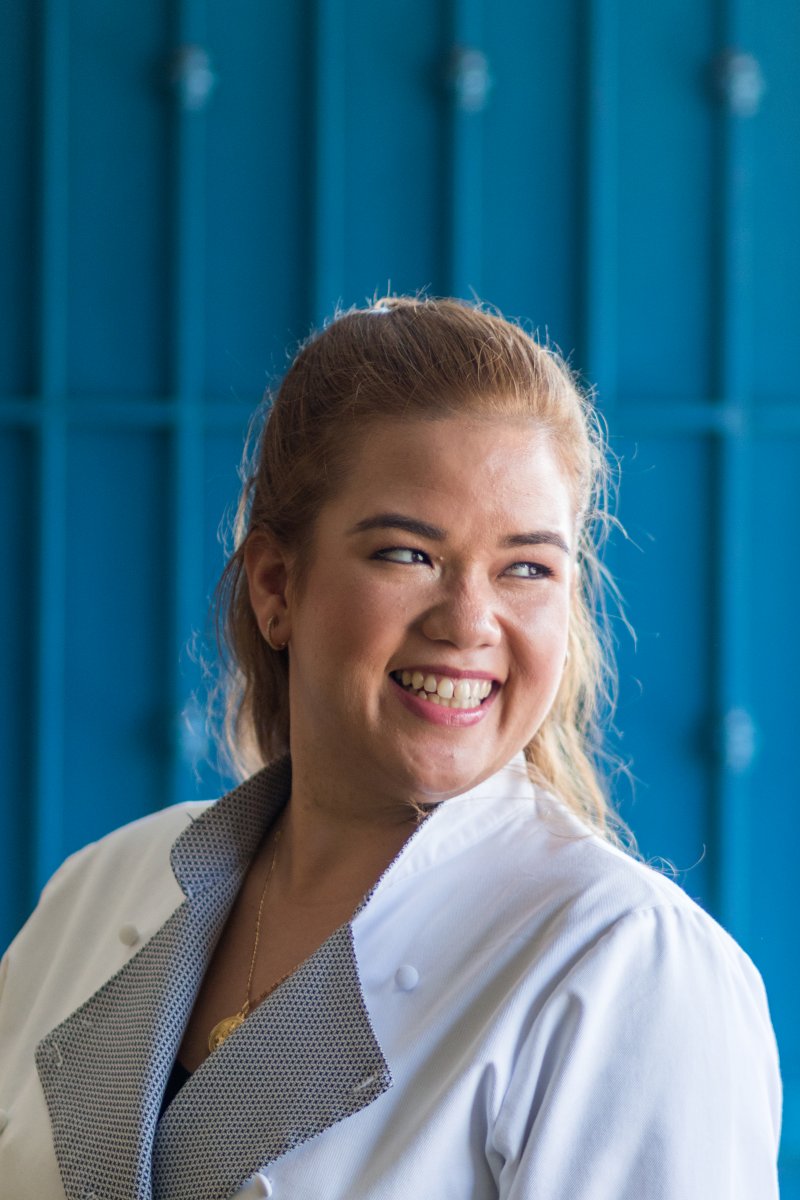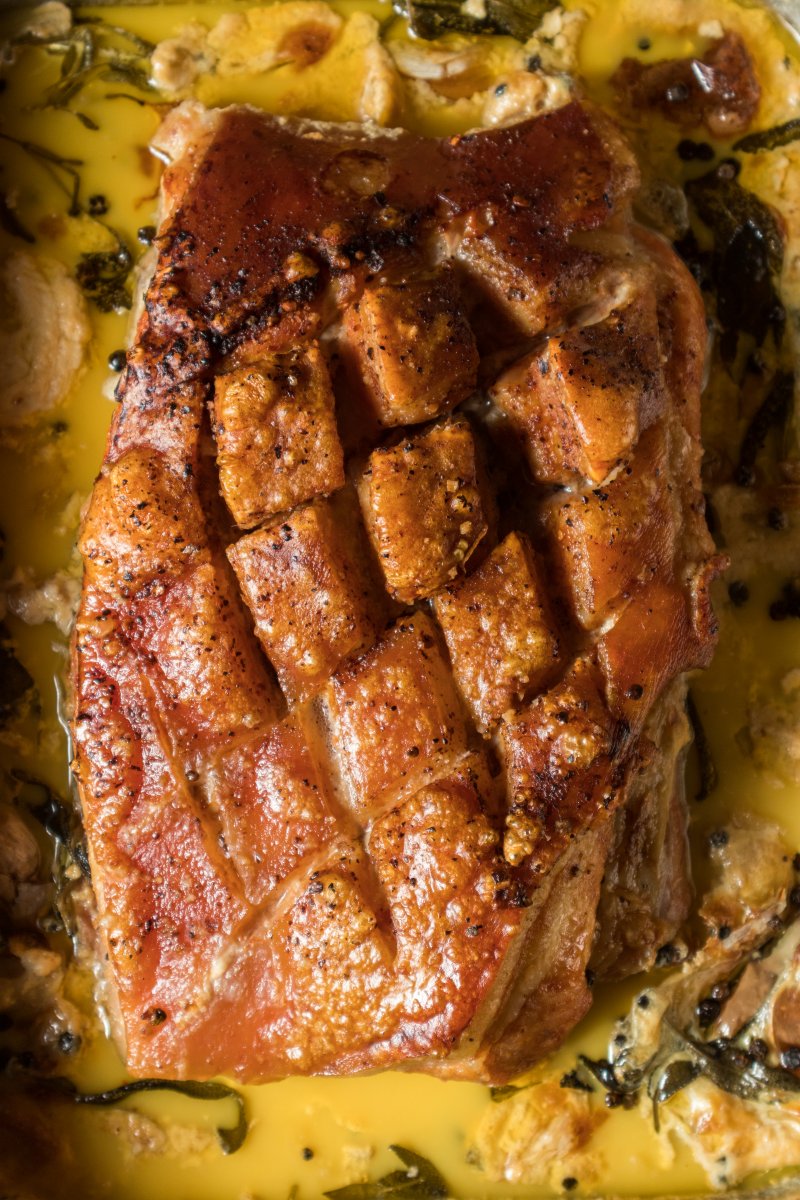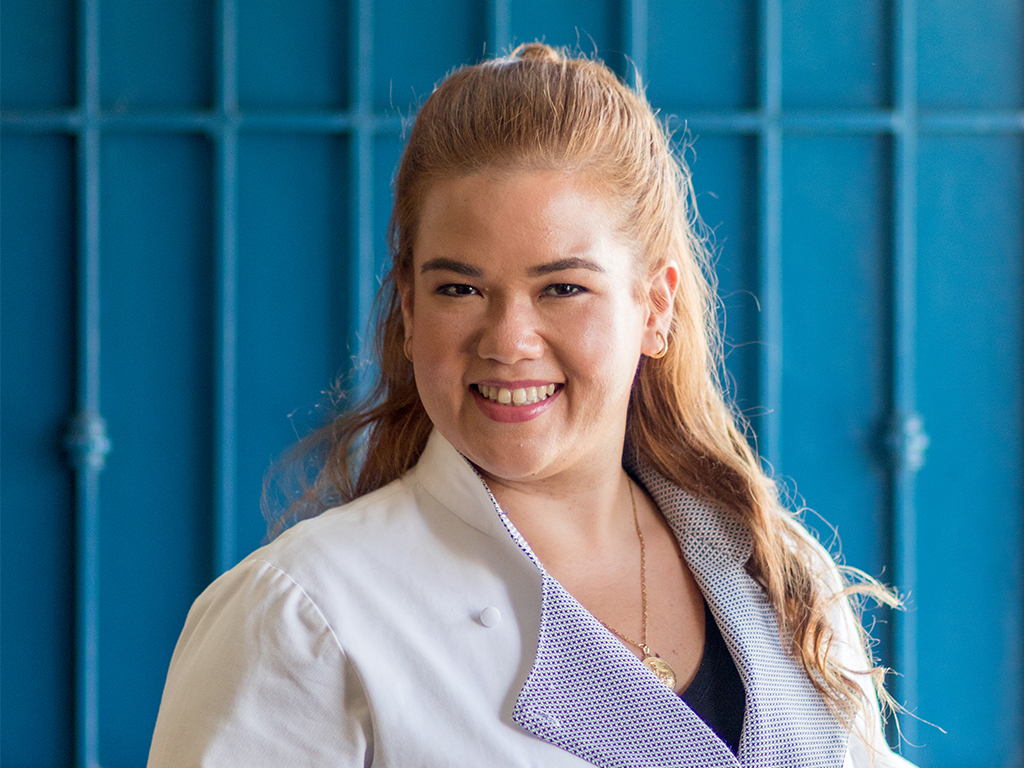It’s been almost five years since Tina Legarda opened Bamba Bistro, an unassuming establishment lodged somewhere in the strip of restaurants lining the streets of BF Homes in Parañaque.
This particular fact is worth mentioning because, by certain standards, an uninterrupted half-decade run in an oversaturated restaurant industry is a feat, which the 34-year-old credits to a combination of factors: the “very hands-on” approach she takes in running her restaurant (she does the purchasing herself and runs restaurant-related errands every day); a focus on the quality of the food and details; and the talent of the team behind it.
It may also have to do with the kind of training Legarda went through. Before opening Bamba Bistro, she worked at a number of restaurants and gained considerable experience at a series of jobs, the first of which was rather unusual—at least for a fresh college graduate. “I did my practicum with chef Jessie Sincioco, and from there, we continued to work together. So my first job, believe it or not, was head chef at this small French café she had just helped open in Binondo.”
A family had sought out the help of Sincioco to open a café, which included having to find a team. Together with another colleague, Legarda was chosen by Sincioco to head the chefs, the main tasks of which included creating the menu, fixing standard operating procedures, and overseeing daily operations.
Legarda, at the time, had little idea of what it meant to manage a kitchen: She was an eager novice tasked with the job of a professional. All she had, essentially, was 600 hours of practicum training.

“The fact that chef Jessie offered me the position was a big compliment, but at the time, I realized right away that it was a mistake to start as head. I was just fresh out of school, which honestly barely prepares you for the real side of F&B. Though it was definitely a good experience, it was only in my next job that I felt like I was finally starting my culinary journey the right way. ”
That was in 2008 at L’Opera group, where she worked with Moreno Mattei as a line cook initially and eventually as the assistant head. Next was a stint at Billy King’s French Corner in Alabang, then in Marina Bay Sands in Singapore to work at Mario Batali’s Osteria Mozza. And finally, a trip back home led to the inception of Legarda’s first business—a private dining concept called Tina’s Table.
“It was set in my house, and the idea was to serve five-course meals that people could reserve for small gatherings.” The concept had a good year-long run, but it happened to be just another step towards what she had long decided to pursue: opening her own restaurant.
“I did my practicum with chef Jessie Sincioco, and from there, we continued to work together. So my first job, believe it or not, was head chef at this small French café she had just helped open in Binondo,” says Tina Legarda.
“I was nervous because I knew for a fact that I dreamt of [opening a restaurant] my whole life,” she says. Much of the apprehension had to do with the menu. “I wanted something that reflected myself and the food that I liked to cook and eat—comfort food that I grew up eating but elevated. And I wasn’t sure if people would accept that, if they would like what I liked.”
The kind of food served at Bamba is built on Filipino and Spanish influences, on potent flavors that Legarda enjoyed as a kid and developed a deep understanding for. She can name specific ingredients (“lots of paprika and garlic”) and moments from her childhood, recalling grand family meals and a grandmother who would bring home ingredients from Europe.
These were details that could have easily lost their relevance through time and only fondly recalled on occasion. Filtered through the sensibility and receptiveness of the young Legarda, who took her first cooking class at the age of eight, these memories became a form of culinary education.
“My family’s cooking is definitely an important influence. We’re exactly the kind of family that talks about food while we’re eating. My mom owns a 30-year old catering business. And my lola, who’s an amazing cook, valued certain ingredients that a lot of people would take for granted.”
“For most of my career, I had to follow somebody. I always had a chef to follow. So I was really pressured. I asked myself then, ‘Will I be a good leader? Will I be able to have a team that can see me both as a leader and as a friend?’” says Tina Legarda.
Nostalgia is certainly crucial to the appeal of Legarda’s cooking. But the more important factor here, Legarda says, is actual cooking experience. And it was through years of experience that she was able to translate nostalgia into something concrete—a place where she could freely create interpretations of comfort food.
The dishes she cooked at last year’s Madrid Fusion Manila were prime examples: a salad of pechay, corn cooked in longganisa oil, kesong puti, chicharon, and pineapple tuyo vinaigrette, and pili-rubbed pork ribs with corn-coconut rice and pomelo sambal and wansoy gremolata.
Still, Legarda remains doubtful on certain things, particularly ones that have to do with her ability to lead a group of people. She points out that transitioning from being a chef who worked for a restaurant to a chef who owns a restaurant was never seamless. “For most of my career, I had to follow somebody. I always had a chef to follow. So I was really pressured. I asked myself then, ‘Will I be a good leader? Will I be able to have a team that can see me both as a leader and as a friend?’”
But with her plans of expanding Bamba Bistro this year, and with the company of mostly the same people who helped her open the restaurant, it’s clear that Tina Legarda may have figured out a balance between those two roles.
Amaretto milk-braised pork belly with scallion-pistachio rice
Serves 6 to 8 people
Prep time: 30 minutes
Cooking time: 2 to 3 hours

Ingredients
4 kilograms whole pork belly
2 cups whole milk
1 1/2 cups amaretto (Disaronno)
1/8 cup whole peppercorn
4 sprigs sage
2 whole heads of garlic, smashed and unpeeled
1 teaspoon chili flakes
2 teaspoon fennel seeds, toasted and crushed
2 tablespoons rock salt
1/2 cup olive oil
For the scallion-pistachio rice
3 cups scallion, sliced
1 cup pistachios
2 tablespoons garlic
2 tablespoons lemon juice
rock salt to taste
Procedure
- Preheat oven to 400 degrees Fahrenheit.
- Using a sharp knife, score the top skin part of the pork belly in a criss-cross pattern with lines 1 inch apart. Make sure the knife only reaches the top layer and does not slice the meat. Season with rock salt, pepper, chili flakes, olive oil, and fennel seeds. Rub generously so that seasoning gets inside the shallow cuts in the skin.
- Line a medium 3-inch deep roasting pan with foil. Place pork in the middle. Roast for about 30 to 45 minutes. Note: Do not use a glass baking dish for roasting, as it may shatter when the milk heats up.
- Remove pork from oven and reduce heat to 350 degrees Fahrenheit. Pour in milk, amaretto, peppercorn, sage, and garlic. The mixture should only cover 3/4 of the pork. Make sure the milk mixture does not touch the skin of the pork. Return to the oven and roast for 1 1/2 hours, or until pork skin is crispy and meat is fork tender.
- Remove from oven and cover with foil. Let it rest for about 20 to 25 minutes to let the juices set. Slice into 1-inch strips.
- To make sauce: Skim the remaining milk-amaretto mixture, leaving the milk curds and herbs. Place on low fire and whisk together. Add chicken stock if needed. Strain sauce and transfer into a saucepot. Whisk until smooth and season sauce with salt and pepper to taste.
- To make rice: Place scallion, garlic, half a cup of pistachios, and olive oil in a blender and purée into a paste. In a pan, add 3 tablespoons of scallion paste and rice. Mix together, toss remaining pistachio (leave some for garnish). Best served hot.
Originally published in F&B Report Vol. 15 No. 3





